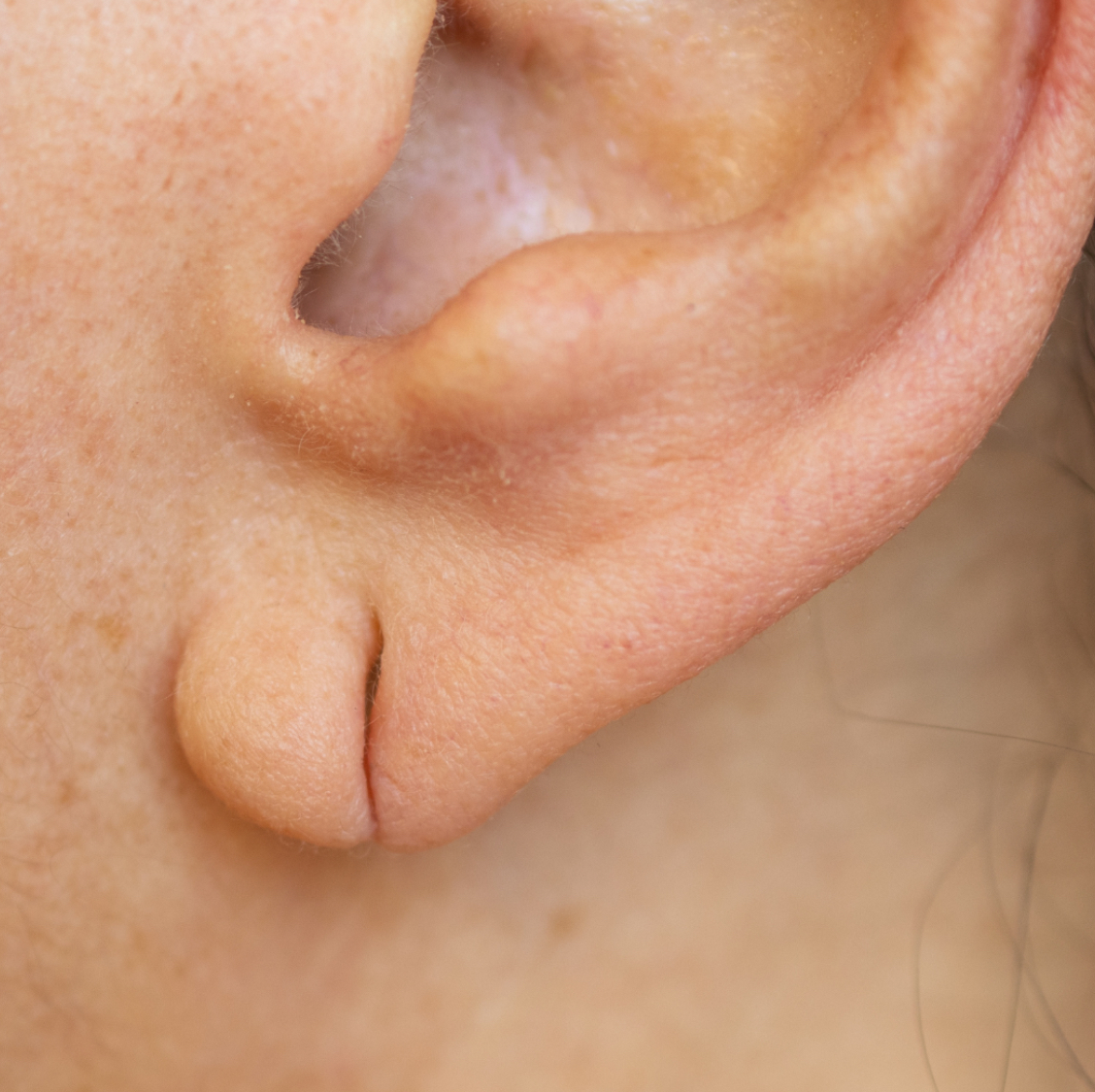SPLIT EARLOBE REPAIR
Split earlobes is a general term used to describe earlobes that have been stretched or torn. Earlobe repair is quickly becoming one of the most requested cosmetic procedures with a plastic surgeon.
Most split earlobes will worsen over time, and they gradually stretch or continue to tear until the earlobe is fully split. Earlobe repair surgery for both split and stretched earlobes is a minor procedure. Excess tissue is removed, and the two splits are carefully stitched back together using very fine dissolvable stitches. Some people with split earlobes might find them to be painful and cause discomfort and irritation, whilst others might simply be unhappy with the appearance of them.

SPLIT EARLOBE REPAIR SURGERY – FACTS
| Length of surgery | 30-60 minutes |
| Anaesthesia | Local anaesthetic |
| Hospital stay | Day case |
| Risks/complications of surgery | Infrequent: Infection, scarring, bleeding, wound healing problems, recurrence |
| Recovery | 5-7 days ear sutures are removed 2-4 weeks until swelling disappears 2-5 days until return to gym and other strenuous activities Scars continue to improve over the next 12 months |
| Driving | Can drive the same day |
| Follow up | 6 weeks |
| Duration of results | Permanent unless recurrence |
DOWNLOAD FURTHER INFORMATION
Split Earlobe Facts
Any plastic surgery procedure is a very personal choice, and understandably there are a number of questions that arise. This information sheet is a general guide for patients considering Skin Tag Removal treatment under the care of Dr Mackenzie. It should provide the answers to some questions that you may have.
What causes a split earlobe?
The number one cause for earlobe split and tearing is from wearing heavy earrings.
Trauma, ear gauges, or earrings accidentally being ripped out can also cause the earlobe to split.
Multiple piercings too close together or too close to the bottom of the lobe can contribute to elongated earlobes.
What can split earlobe surgery achieve?
This procedure will allow you to repair the damage from torn ear lobes and prevent the tear from reopening.
The treatment also stops it from splitting further, which can be painful and can lead to an infection.
How is the procedure performed?
Split earlobe surgery is usually performed under local anaesthetic and takes less than an hour to complete.
The edges of the piercing hole or split are carefully refreshed so that they can be sutured back together, reconstructing the normal curved contour of the earlobe.
Tiny stitches are used to suture the earlobe back together – they are almost as fine as a human hair.
An antibiotic ointment is then applied to protect the suture line and help it to heal.
After the procedure, you can return home immediately, but you should avoid any pressure on the ear.
When you go home, we will advise you on how to care for your wounds, including applying the antibiotic ointment daily.
You can get the earlobes wet, and wash and shower normally – just avoid rubbing the earlobes.
After 7 days, you will need to return for a follow-up visit to remove the sutures. You will be advised how to look after the scar.
When can I have my ear re-pierced?
In general, it is better to re-pierce your ears in a slightly different place than the original piercing hole.
The reason for this is that the original piercing hole is within the new scar, and the scar is never as strong as normal, unscarred skin.
Placing the piercing hole within the scar can lead to the earring pulling through the scar and a repeat split earlobe.
How long until I can re-pierce my ears?
In general, you should wait 3 months for the scar to be completely healed before you re-pierce your ears.
This is important because if you pierce your ears before the incision is fully healed and the scar established, the earring may pull through the incision, and you could end up with a separated earlobe.
What are the risks of split earlobe repair surgery?
As with any procedure, there are some risks with split earlobe repair surgery.
These include bleeding, infection, swelling and unfavourable scarring.
An uncommon, but serious complication is hypertrophic or keloid scarring, where an excessively lumpy scar is formed on the earlobe.